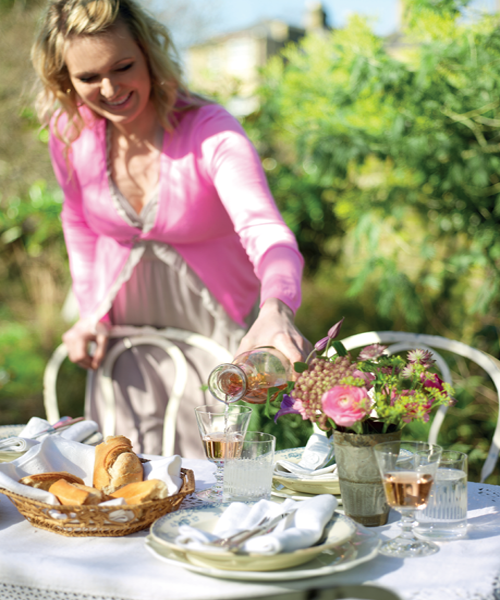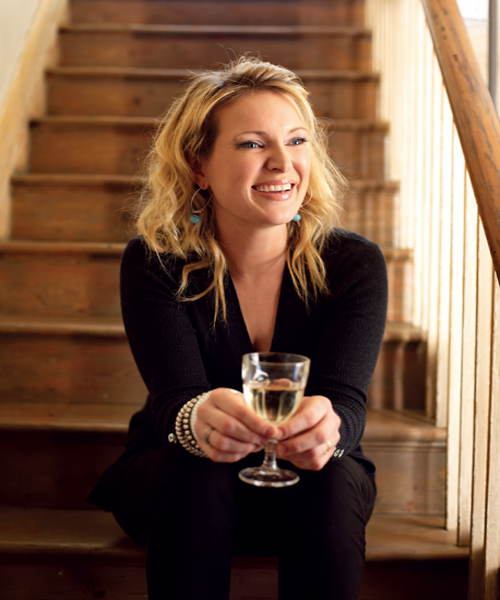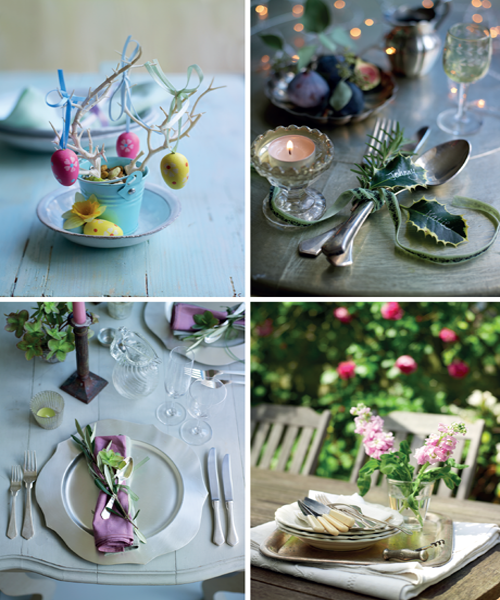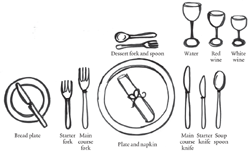
Полная версия:
Entertaining at Home

Rachel Allen
Entertaining
at
Home


CONTENTS
Cover
Title Page
Introduction
BRUNCHES AND LUNCHES
BRUNCH
Baked eggs with creamy kale
Wild mushrooms on toast with chive hollandaise
Citrus honeyed fruit
Sweetcorn fritters with mango and avocado salsa
Hot buttered oysters on toast
Lazy weekend Bloody Mary
Isaac’s frittata
LUNCH
Spinach soup with rosemary oil
Skirt steak with spicy potatoes
Oven-baked courgette tortilla
Stir-fried tofu with noodles
Celeriac soup with roasted hazelnuts
Tuscan beans on toast
Creamy fish pie with mushrooms, cucumber and leeks
Tagliatelle with smoked salmon and avocado
Clams marinara
Crab bisque
Salade Niçoise
Chicken and cabbage salad
Thai noodle broth
Pork rillettes
Game terrine with celeriac remoulade
Penne with asparagus and Parma ham
Venison sausages with celeriac purée
Stocks
DESSERTS
Polenta, orange and almond cake
Almond meringue with apricot purée
Orange meringue roulade
Apple snow with shortbread biscuits
Mango and raspberry Bellinis
Apple and blackberry bread and butter pudding
CASUAL MEALS
MAIN COURSES
Chilli sin carne
Sweet potato and chickpea tagine
Roasted vegetable coconut curry
Bean burritos with refried beans, guacamole and tomato salsa
Fish tacos with pepper and spring onion salsa
Fusilli with beans, smoked salmon and olives
Chicken and olive tagine
Chicken, pork and prawn paella
Beef and red wine stew
Chinese-style ribs with coleslaw
Mild lamb curry
Slow-roast ginger and citrus shoulder of pork
DESSERTS
Spiced poached pears
Ginger and treacle pudding
Apricot crumble
Cherry custard pudding
EATING OUTDOORS
STARTERS
Middle Eastern chilled cucumber soup
Harissa roasted vegetables
Tomato and lentil couscous salad
Pan-fried mackerel with panzanella salad
MAIN COURSES
Southeast Asian grilled fish
Salmon teriyaki
Marinades
Spiced barbecued lamb with potato salad and mint raita
Honey, mustard and ginger pork skewers
Lamb and lentil salad with olives and roast red peppers
SALADS AND SIDE DISHES
Broad bean and pancetta salad
Fennel, orange and hazelnut salad
Sue’s aubergine, yoghurt and harissa salad
Beetroot slaw
Garlic and herb mushrooms
Grilled asparagus
Barbecued corn on the cob
DESSERTS
Blueberry and custard tart
Strawberries in rosé wine
Strawberries and blueberries with Grand Marnier
Peaches with mascarpone, walnuts and honey
CANAPÉS AND SMALL BITES
SAVOURY CANAPÉS
Moroccan tomato and yoghurt shots
Spicy pastry straws
Black pudding, blue cheese and beetroot toasts
Caramelised onion, blue cheese and walnut tarts
Gently spiced prawn and bacon skewers
Smoked salmon tartlets
Buckwheat blinis with smoked salmon, crème fraîche and caviar
Crab, chorizo and anchovy toasts
Potato soup with chorizo and parsley pesto
Thai chicken cakes with sweet chilli jam
Duck and Chinese five-spice spring rolls
Mini Yorkshire puddings with peppered steak and onion jam
COCKTAILS
Watermelon margaritas
Elderflower champagne
Negroski
Summer punch
Tropical fruit fizz
Apple, rum and ginger
SWEET CANAPÉS
Mendiants
Chocolate, pecan and meringue squares
Pistachio and cranberry chocolates
Crystallised ginger fudge
Mini coffee cupcakes
SMALL CELEBRATIONS (2–4 PEOPLE)
STARTERS
Scallops with Brussels sprouts, bacon and orange
Asparagus on toast with hollandaise sauce
Warm winter green salad with Caesar dressing, smoked bacon and a poached egg
Tomato, mozzarella and tapenade crostini
Gratins of butternut squash and leek
Halloumi with Greek salad and roasted pitta wedges
MAIN COURSES
Summer pea and mint ravioli
Pan-fried tuna with olive, sun-dried tomato and caper salsa
Poached monkfish with tomato, sherry vinegar and toasted hazelnut salsa
Pan-grilled chicken breasts with basil cream sauce and roast cherry tomatoes
Rack of lamb
Chicken confit
Garlic and herb pork chops
Steak au poivre
Pheasant casserole with chorizo, cream and thyme
Roast duck breasts
SIDE DISHES
Watercress mousse
White bean purée
Pea guacamole
Potato and anchovy gratin
Cucumber with mint
Buttered courgettes
Fluffy mashed potato
Creamy lentils with rosemary and tomatoes
Creamy polenta
Sauteed rosemary potatoes
DESSERTS
Chocolate crèmes brulées
Iles flottantes
Coffee zabaglione with tuiles biscuits
Orange sorbet with Campari
DINNER PARTIES (4–8 PEOPLE)
STARTERS
Ballycotton prawn soup with rouille and toasts
Chicken liver pâté with sweet apple relish
Fish mousse with shrimp beurre blanc
Smoked mackerel and goat’s cheese soufflé
Decadent mushroom tart
Beef carpaccio
Sesame and mint chickpea pancakes
MAIN COURSES
Summer vegetable stew
Jerusalem artichokes, toasted hazelnuts and goat’s cheese with pasta ribbons
Bulgar wheat pilaf
Miso salmon steaks
Fragrant coconut prawns
Fish stew
Pot-roast pheasant with bacon and brandy
Beef Wellington
Roast pork belly with a fennel and garlic rub
Roast loin of lamb with a spicy rub
Coq au vin
Roast duck legs
SIDE DISHES
Lentils with red wine
Braised chicory
Green salad dressings
Spinach and mint orzo
Creamy potato and Gruyère gratin
Ribboned carrots with honey and parsley
Butternut squash and chickpeas with cumin and coriander
Roast garlic colcannon
French beans with lemon and pine nuts
Soy and sesame pak choi
DESSERTS
Maple pecan toffee tart
Blackberry mousse
Raspberry and amaretto tart
Peach jelly pannacotta pots
Tiramisu
Spiced raisin tart
Almond and orange cake
Orange ice cream
Cinnamon ice cream
Gin and tonic lemon sorbet
Choosing a cheese board
Paper-thin crispbreads
LARGER GATHERINGS (8–12 PEOPLE)
STARTERS
Chilled avocado soup with red and yellow pepper and coriander salsa
Roast wedges of butternut squash with goat’s cheese and spinach pesto
Spinach pesto
Zingy Asian prawns
Lamb cutlets with spinach pesto
Winter leaf salad with pomegranate, apple and walnuts
Smoked fish platter with Ballymaloe cucumber relish
MAIN COURSES
Greek red peppers
Baked beetroot risotto with Parmesan crisps
Zesty pine nut-crusted fish with salsa verde
Soy-poached fish with avocado salsa
Spiced chicken with red pepper and almonds
Conchiglie pasta with chicken livers, bacon and port
Winter herb and sausage pasta
Cassoulet
Beef and wild mushroom lasagne
Roast haunch of venison
SIDE DISHES
Wilted greens with garlic and anchovy breadcrumbs
Roast Jerusalem artichokes
Rosemary and garlic bread
Parsnip, mustard and parsley mash
Crunchy roast coriander potatoes
Potato and mushroom gratin
Cucumbers with tomatoes, cream and mint
DESSERTS
Amaretti with brandy and ice cream
Iced strawberry parfait with strawberry sauce
White chocolate and ginger parfait with dark chocolate sauce
Raspberry millefeuille
Salted caramel chocolate tart
Rhubarb and ginger crumble cake
Passion fruit and orange granita
Chocolate roulade
THE BUFFET PARTY
Egg mayonnaise
Potato and fresh herb salad
Cucumber and dill salad
Tomato and basil salad
Mushroom, lemon and garlic salad
Oignons à la Monégasque
Smoked mackerel with dill mayonnaise
Oysters
Gravalax
Poached whole salmon with basil mayonnaise
Boiled shrimps or prawns with herb mayonnaise
Crab and mayonnaise salad
Dressed mussels and clams
Ballymaloe glazed loin of bacon with spicy mayonnaise
Cold roast chicken with herb stuffing
Roast lamb with redcurrant jelly
Roast pork with apple sauce
Traditional roast rib of beef with horseradish sauce
PLANNING YOUR BUFFET PARTY
Index
ACKNOWLEDGEMENTS
Copyright
About the Publisher

Introduction
Friends, family, good food, good times-this is what entertaining is all about. It can be as relaxed as flopping down on the sofa with a few friends to share nibbles and drinks, or as formal as getting out your best china and ironing your tablecloth for a three-course meal. How you choose to share your time and your cooking creations with your loved ones is entirely up to you. What each kind of gathering has in common, however, is a happy, welcoming atmosphere, and the main ingredient for that is you.
The kind of entertaining my family tends to do at home is most often spontaneous and casual. Maybe there’s a big pot of cassoulet bubbling away gently in the oven and we’ll realise there’s enough to share, so after a phone call or two we find ourselves with several hungry friends arriving at the door with bottles in hand. But there are also times when we’ll have a larger gathering or a particularly special evening when we want to push the boat out and make more of an effort with both the food and the table decorations.
In this book I hope to give you the inspiration and tools you will need to entertain for any gathering, whether relaxed and intimate or a great big bash, while actually getting to enjoy yourself as well. It doesn’t matter if you’re a seasoned cook or a complete novice in the kitchen; I’ve tried to give you achievable recipes that take the mystery and complication out of cooking for a special occasion. And you’ll find many of the recipes easy enough to cook to make any meal a special occasion.
Your guests
Whatever sort of entertaining you are doing, do let your friends know what kind of party it is, whether a casual plate-in-your-hand-type supper, a stand-around evening of cocktails and canapés, or a more chi-chi dressy affair. There’s nothing worse than turning up in jeans only to find that everyone else is in a little black number.
Be sure to always ask about food allergies or other dietary requirements. It’s often easier to make the same food for everyone, so don’t plan your food until you know what your limitations are. Of course, if your plans are to have a barbecue or a big roast, you may need to prepare something special for your vegetarian guests, but for the most part, simple allergies shouldn’t be such a problem that everyone has to have a limited menu. There are so many options-it’s not as scary as you think.
If you’re planning a very special occasion where you’re either cooking a more elaborate meal or you have a large crowd, you may wish to send out proper invitations with an RSVP so that you know exactly how many you’re cooking for before you do your shopping.
On the day of your party, think about having nibbles such as nuts or canapés ready to tide everyone over until all your guests have arrived-or to keep them fed if things are running late in the kitchen!
Your home
If you are doing more grown up, or ‘formal’ entertaining, take the time to think about atmosphere and how to create a welcoming setting so your guests feel you’ve made a little extra effort to make them feel special and relaxed. Little touches such as candles or fairy lights rather than harsh lighting from above can really help set the scene. Besides, who (or indeed what room) doesn’t look better in the soft glow of candlelight?
Flowers make any home look more dressed up, but that doesn’t necessarily mean investing in bouquets from the florist. Even just some little vases or jars of hand-picked flowers from your garden add a thoughtful touch. And you don’t need to limit them to the table-put them in the kitchen, living room, even the bathroom.
Your table
If you’re having a larger group of people and are feeling creative (and have the time), you may even wish to make table decorations and/or place settings for each of your guests. It also means you can control who sits next to who! It’s great fun to make name tags and people love taking them home. Be as creative as you wish. Below are some of my favourite table-decorating ideas:
* Everyone loves place cards! Try old-fashioned packing labels with the guest’s name written on and tied around a napkin or the base of a wine glass, or even pierced through onto a satay stick. Or if you’re feeling ambitious, make cookies or biscuits for each guest with their name written in icing or chocolate.
* If you don’t have napkin rings, just tie a pretty piece of ribbon around your napkins, perhaps in different colours for each napkin. To jazz it up further, you can tie on fresh rosemary and/or bread sticks.
* For a really special event, place mini wrapped presents on each place, tied up with twine or ribbon and with a name tag.
* For a seaside theme try candles in oyster or scallop shells or sand in the bottom of glass candle holders or pretty glass jars with tea lights; pebbles, slate or driftwood pieces with guest’s names in chalk; shells on the table.
* For a holiday splash, place Christmas baubles in little glasses or shallow tumblers around the table; spray some holly lightly with glitter, place small branches in a flower vase with baubles hanging off (place sand in the bottom to keep the branches in place). You can write guests’ names on bay, holly or ivy leaves with gold or silver pen.
* At Easter, you can try a similar trick-from small branches hang painted eggs. You can also spray the branches silver or gold. You could even do a mini version with quail’s eggs! Place mini pastel-coloured Easter eggs or little chicks around the table.
* In autumn, place pumpkins and squashes in groups on the table and/or outside the front door.
* For national holidays, place little flags at each setting or down the centre of the table.
* For your floral arrangements, try not to have one enormous bouquet in the middle of your table. Instead, make smaller arrangements in lots of small glass holders of different sizes so your guests can see over them. Or try small terracotta pots of herbs or little flowering plants, or put miniature bulbs, such as bluebells or narcissus, in a pot or glass vase for a temporary display. Avoid overly scented flowers, which may overpower your food.
SETTING THE TABLE
Not everyone has an extensive range of cutlery to set a formal place setting, so don’t panic about doing this ‘properly’. But I often do get asked, ‘Where should the water glass go?’ or ‘Where should I put a side plate?’, so if you want to set a fancy table, here is the general thinking on how your place setting should look:


What to serve?
Choosing your menu is the first important step to a good party. More often than not in planning what you serve, seasonality is the key. But menu planning is also about choosing dishes that will both complement each other and be enjoyable to eat together. So avoid a repetition of ingredients from course to course, as well as ensuring you have different colours and textures of food throughout. Ensure, too, that each of the elements when added up are not too heavy.
As before, be sure to get any dietary restrictions from your guests well in advance of your planning. Don’t feel you need to plan three big fancy dishes-one show stopper will be enough to create a memorable meal if you are time-starved but still want to impress. Your other courses (should you choose to serve them) can then be less complicated. You also don’t need to serve fancy dishes just because you’re having guests-simple food beautifully presented in your warm loving home can have just as much of an impact, if not more so.
At the end of each chapter I have grouped together my favourite recipe combinations or advice for preparation to make well-balanced menus in order to help simplify your planning.
PREPARING AHEAD
Do remember that entertaining should be about you having a good time too, so the more prepared you are, the easier and more fun it will be. Much to my husband’s complete puzzlement, I find list-making and even an ‘order of work’ (writing out in what order and when things should be prepared and cooked) a great help.
For stress-free entertaining, choose your menu well in advance rather than on the day or the day before. Shopping ahead is always going to make things easier! Be sure to include some recipes that can be prepared in advance so you can get ahead and not be stuck at the stove while your friends are all having a great time without you. If you are making something quite ambitious for a main course, then make sure your starter or dessert is easier to prepare. I have included lots of recipes for the time-poor, sweet-toothed among you.
It sounds so obvious, but write down exactly what you need, including any suggested cookware sizes, then check it very carefully so you can be certain you have everything you need once you get to the till.
On the day itself, set plenty of time aside to get yourself ready. Even if you’re still putting things in the oven when your guests arrive, you want to feel ready to entertain. Easier said than done sometimes, but this is where working out the timings in advance will come in handy.
Also don’t forget to place the basics on the table ahead of your guests arriving, like bread and butter or olive oil, salt and pepper, or any sauces you may need. You don’t want to have to keep jumping up and running to the kitchen.
BUDGET
One very important point to make is that entertaining does not have to be costly. Clever, seasonal shopping, and even a bit of foraging if you have the time and the resource (even if just for flowers), can lead to a great get-together. Why not invite your friends over for a relaxed casserole, or ask them to each bring a dish? Either tell people what you would like them to bring (a salad, a dessert) or let them bring what they want for a ‘pot-luck’ party-though this may not be everyone’s idea of a balanced meal! You can give them a general idea of what you want them to bring (a starter or a main, for example), so you don’t end up with ten desserts and no dinner…



